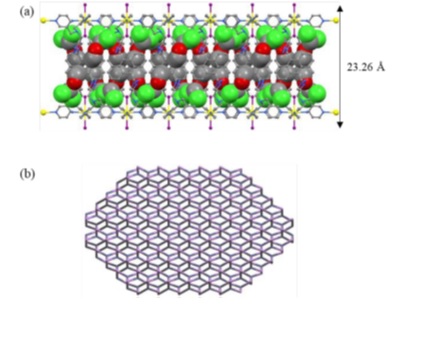Junhee Kim, Junmyeong Park, Dongwon Kim, Martino Di Serio and Ok-Sang Jung
Abstract
Reaction of CdI2 with C2-symmetric multidentate N-donor (L) in a mixture of ethanol and dichloromethane produces single crystals of 3CH2Cl2ˑ2C2H5OH@[CdI2L] (23.26 Å thickness layer) with a new 2D topology of {43ˑ62ˑ8}. These single crystals in tetrahydrofuran are isomerized into new single crystals of 4C4H8O@[CdI2L] (9.15 Å thickness layer) with a 2D topology of sql {44ˑ62}. The tetrahydrofuran solvate molecules of 4C4H8O@[CdI2L] are fully replaced by adsorption of dihalomethane molecules in the single-crystal-to-single-crystal (SCSC) mode. The most interesting feature is that both 3CH2Cl2ˑ2C2H5OH@[CdI2L] and 4C4H8O@[CdI2L] crystals are integral to an efficient and tolerant matrix for recognition of diiodomethane (CH2I2) in the SCSC mode, even though the adsorption rate of 4C4H8O@[CdI2L] crystals is much faster than that of 3CH2Cl2ˑ2C2H5OH@[CdI2L]. That is, their blue photoluminescence is significantly quenched in the presence of CH2I2, and recovered by removal of the CH2I2.

